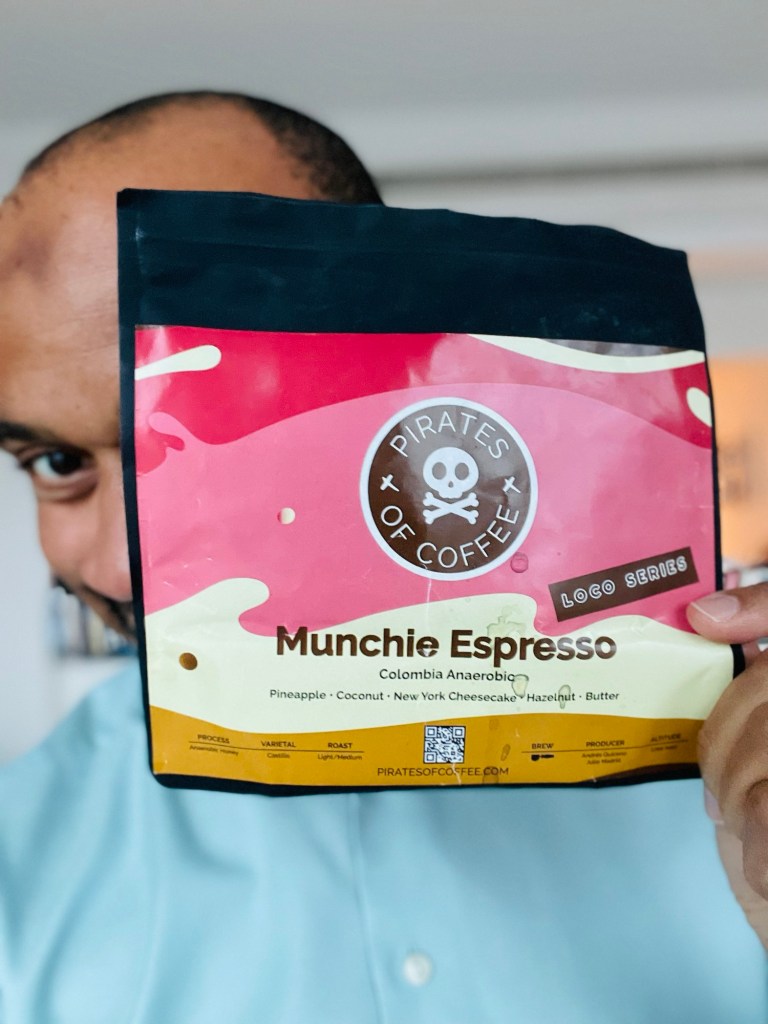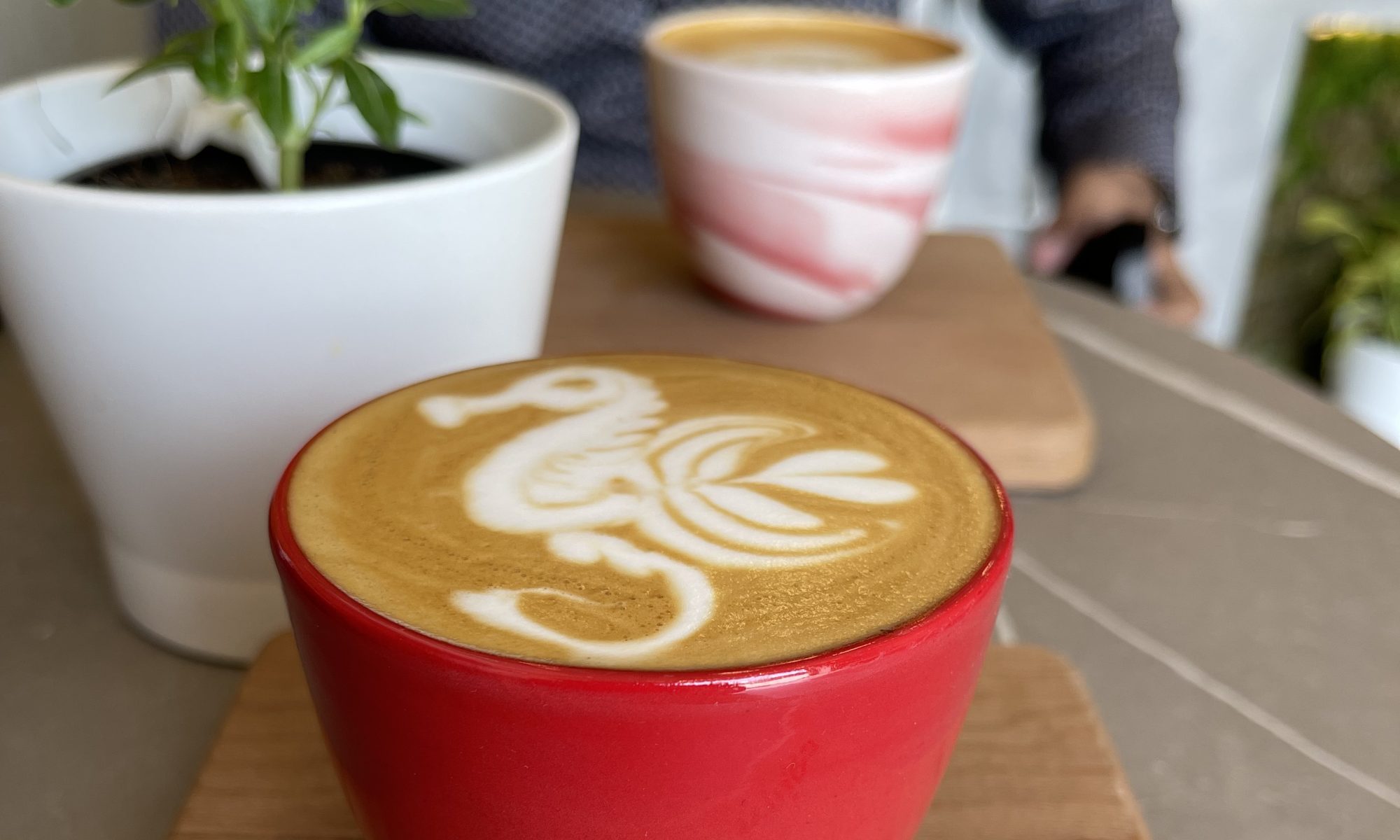
Wow! wow! wow! I don’t even know where to start… BUT here we go.
First of all what is a munchie espresso?
It’s a Colombian Anaberoic honey processed, castillo varietal coffee, grown at 1,700m and produced by Andrés Quiceno and Julio Madrid on La Riviera Farm in Risaralda, Colombia, with a taste profile of…. wait for it…..
Pineapple . Coconut. New York Cheesecake. Hazelnut and Butter
Roasted by Pirates of Coffee in Toronto, Canada, part of their Loco (Spanish for crazy as in mad) series.
Now for the coffee geek part….
“The Honey Culturing, Anaerobic process involves using fermentation starters and the unique natural flavours that come from fruits and aromatic plants, allowing for new sensory profiles to be developed by mixed fermentations between the starters and traditional coffee fermentation processes.” source: Pirates of Coffee website
So, what anaerobic processing in coffee?
Anaerobic fermentation is a coffee processing method where coffee is fermented in pressurized sealed tanks deprived of oxygen. This lack of oxygen produces distinct acids, lactic acids for example, that create a different and distinct flavor profile for the coffee. (source: JBC roasters).

In short, every coffee goes through some sort of fermentation as soon as it is picked before it is dried “naturally” in the sun or “washed”. If a coffee is anaerobic natural, it is fermented in barrels with its skin on, but if it is washed, it is fermented in barrels without its skin on. Honey process has some skin on during the fermentation process. This means that the anaerobic method “affects” the natural process of fermentation by throwing the beans straight into a barrel without air for hours and sometimes days.
You may have seen “72 hour anaerobic process”. Now, sometimes these barrels may have dried fruit in them, which means the coffee absorbs those enzymes and taste profiles, which can be preserved and roasted delicately by an expert coffee roaster to enhance the taste.
sounds confusing ?
Yes it is a bit, BUT this type of method means that you can get some crazy types of coffee. So in short when this coffee was prepared it was not entirely unusual to get coconut, pineapple, etc coming through.
So, did I taste these ?

Yes! that’s why I’m writing about it. I never thought that it was possible, but in short, I definitely tasted coconut with milk based coffee like a flat white or cappuccino and picked up pineapple acidity too. There was a buttery mouthfeel which I guess resembles NY Cheesecake but I wouldn’t say that I picked up the vanilla and lemon zest notes typical of a classic chessecake.

Nevertheless, I won’t be forgetting this coffee anytime soon.
I first encountered it at the World of Coffee Dubai (see last post) when I was offered a piccolo at the Toga Coffee stand and even before I tasted it, the smell of coconut blew me away. I then knew that I had to buy this coffee and to my pleasant surprise I met the head roaster, Abbas, who guided me through their website , where I bought the last one – I’m truly blessed.
I brewed this coffee every day till it ran out and shared it with my wife and a friend so that they too could enjoy my experience – after all good things in life should be shared.
Well done to the coffee farmers, the coffee roaster for selecting and roasting this coffee like this and to all those involved in letting me enjoying this wonderful coffee.
YUMMY MUNCHIE.
If you live in the UAE, their coffees are offered at Toga in Sharjah and if you are in North America, definitely visit their website and order this and lots of wonderfully funky coffee they offer.

